 Home - TDLAS modules - Applications - Application Case :High precision and sensitivity detection of gas measurement by laser wavelength modulation spectroscopy implementing an optical fringe noise suppression method
Home - TDLAS modules - Applications - Application Case :High precision and sensitivity detection of gas measurement by laser wavelength modulation spectroscopy implementing an optical fringe noise suppression method Recently, the joint research team from Anhui University of Science and Technology, West Anhui University, Department of Atmospheric and Oceanic Sciences, Fudan University, Shanghai QiZhi Institute published an academic papers High precision and sensitivity detection of gas measurement by laser wavelength modulation spectroscopy implementing an optical fringe noise suppression method.
The Tunable Diode Laser Absorption Spectroscopy (TDLAS) has been developed for trace gas measurement, as its unique advantages of high precision, high sensitivity and self-calibration in situ qualification with-out any sample preparation. The multi-pass cell (MPC) with a long optical path is usually applied to enhance TDLAS-based sensor’s detection precision and sensitivity. However, the unexpected optical fringes occurring in the MPC often spoil the sensor’s detection precision and sensitivity seriously. The detection precision and sensitivity of the TDLAS-based sensors containing an MPC are often limited by the optical fringes that result from diffraction, scattering on the mirror surface imperfections, mirror aberration, thermal expansion, cold contraction, or stress deformation. Therefore, the complex optical fringe consisting of different optical fringe will be observed in the MPC. These optical fringes are due largely to a small amount of laser reaching the detector with an optical path length differing by ΔL from the main laser beam. Those problems are common for TDLAS, especially using dense overlapped spot pattern MPC and some different methods are proposed to eliminate the negative influence of the optical fringes.
In this work, a novel method to suppress optical fringe noise in the tunable diode laser absorption spectroscopy is proposed and applied to the CH4 gas sensor perturbed by optical fringes for higher detection precision and sensitivity. The schematic diagram of the developed CH4 detection instrument is shown in Fig. 1 . HealthyPhoton Co.,Ltd provided a HPLIA Miniature dual-channel modulated demodulation lock-in amplifier for this project. The lock-in amplifier demodulates the signal in the 2f mode with respect to the sync signal. The time constant of the lock-in amplifier is set to 1 ms.
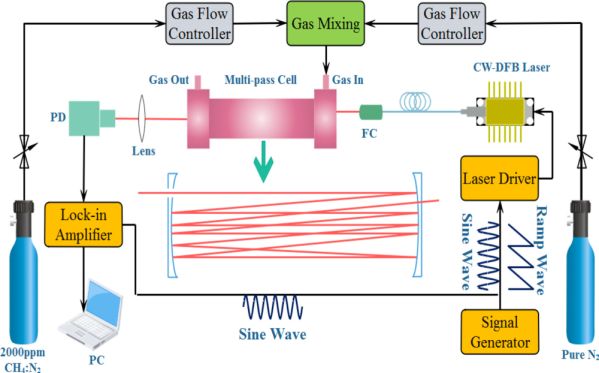
Fig.1. Schematic diagram of the developed CH 4 detection system
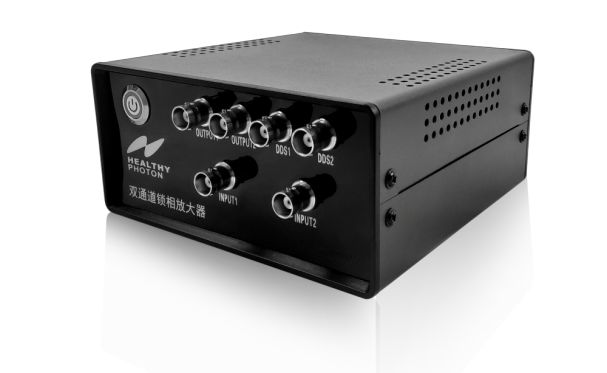
lock-in amplifier (Healthy Photon, HPLIA)
For the 2nd harmonic(2f) signal of 20 ppm CH4 spoiled by optical fringes and random noise, by the novel method, the signal-to-noise ratio (SNR) of the 2f signal is improved about 6.5 times from 17 to 182 with an optimal averaging spectral range Δ. A ∼1.5 times improvement in the measurement precision of CH4 is achieved compared to unprocessed raw signal. The corresponding minimum detectable concentration can be improved from 3 ppb down to 0.78 ppb. The corresponding noise equivalent absorption sensitivity (NNEA) and the noise equivalent concentration (NEC) of the system is 6.13 ×10-11cmW-1Hz-1/2 and 0.181 ppm, respectively.
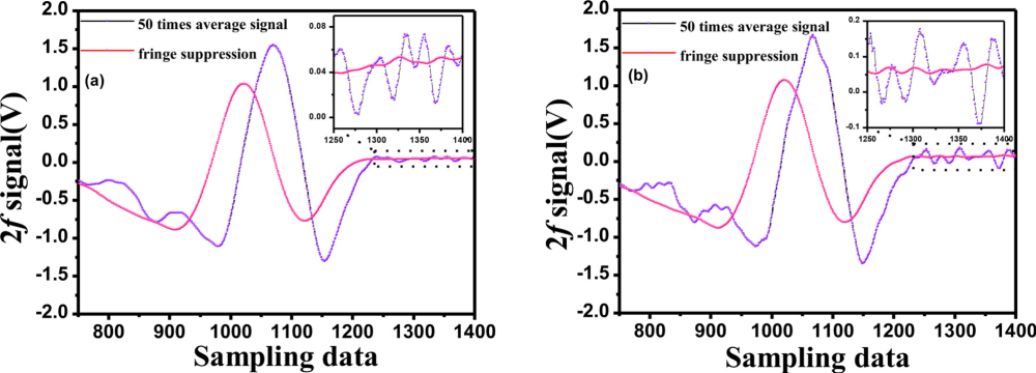
Violet line from traditional averaging method and magenta line from the novel optical fringe noise suppression method.
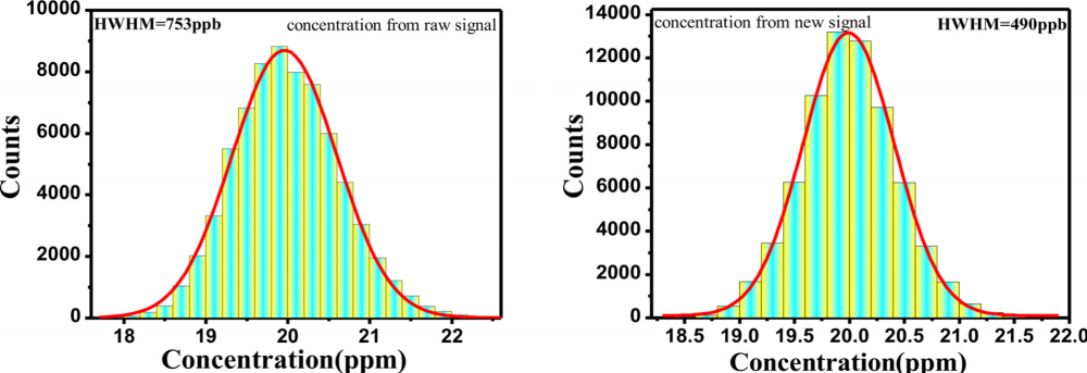
Histogram plot of the 20 ppm CH 4 deviation.
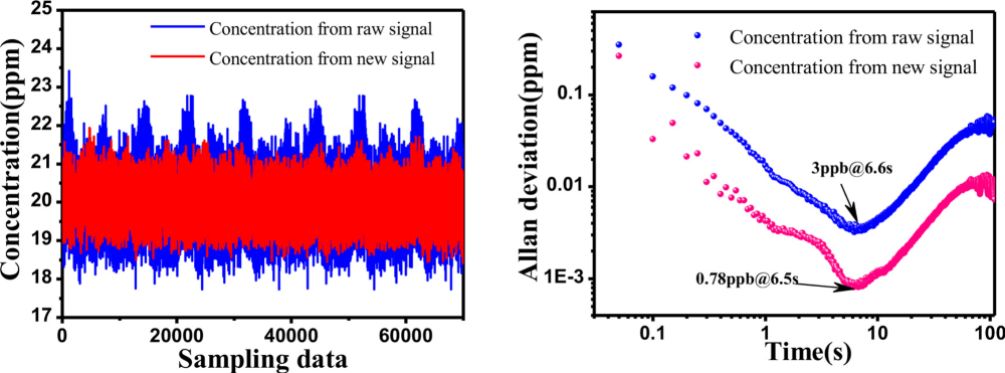
20 ppm CH 4 Allan-deviation stability of developed overlapped spot pattern MPC.
Reference:
Yanan Cao, Xin Cheng, Zong Xu, Xing Tian, Gang Cheng, Feiyan Peng, Jingjing Wang
High precision and sensitivity detection of gas measurement by laser
wavelength modulation spectroscopy implementing an optical fringe noise
suppression method, Optics and Lasers in Engineering 166 (2023) 107570
www.elsevier.com/locate/optlaseng
 Tel:+86-156-1892-2826 Email:info@healthyphoton.com
Add:Room 305, Building 1, Zhongchuang Science Park, Jinyuan Road, Panhuo Street, Yinzhou District, Ningbo City,China
Tel:+86-156-1892-2826 Email:info@healthyphoton.com
Add:Room 305, Building 1, Zhongchuang Science Park, Jinyuan Road, Panhuo Street, Yinzhou District, Ningbo City,China


